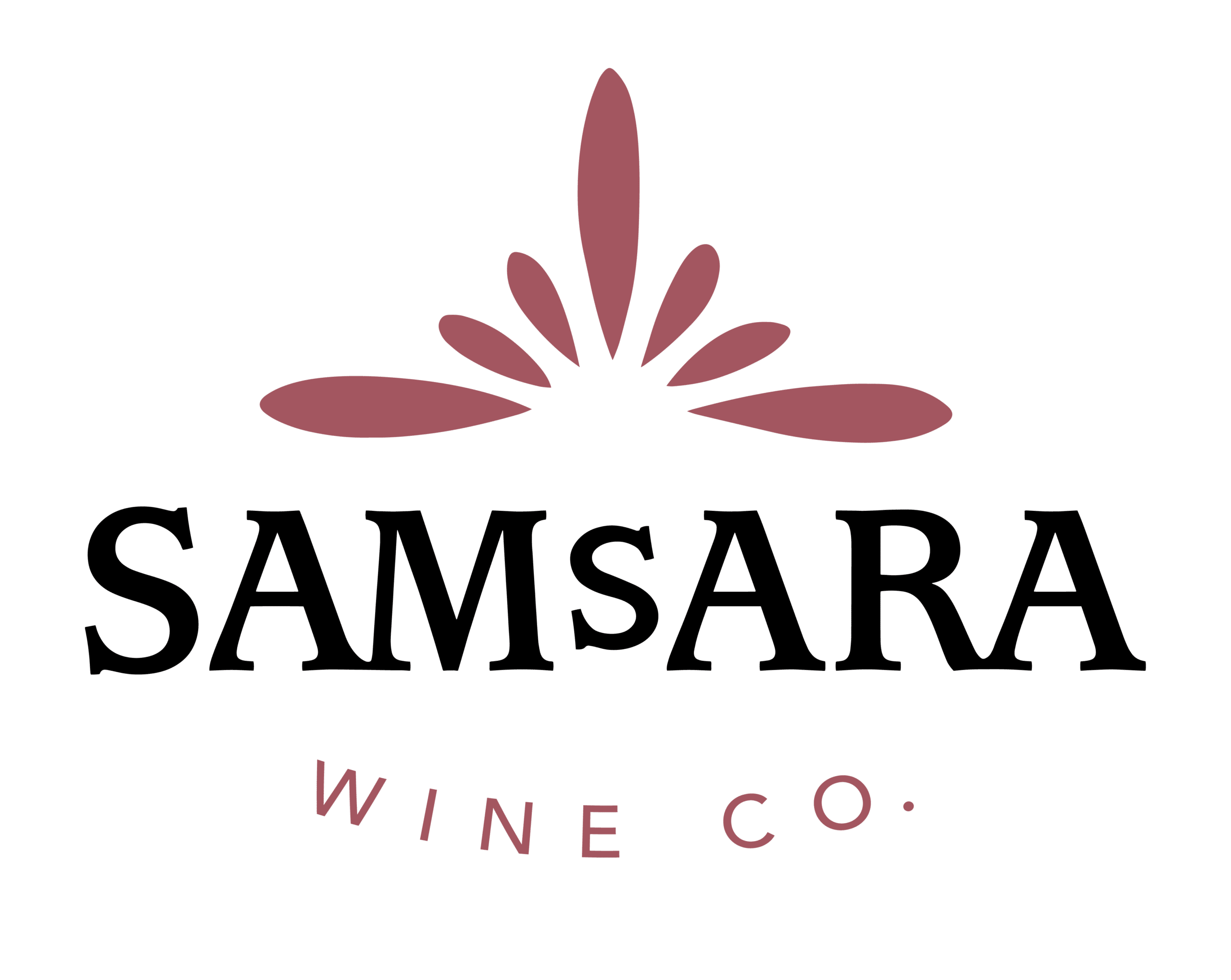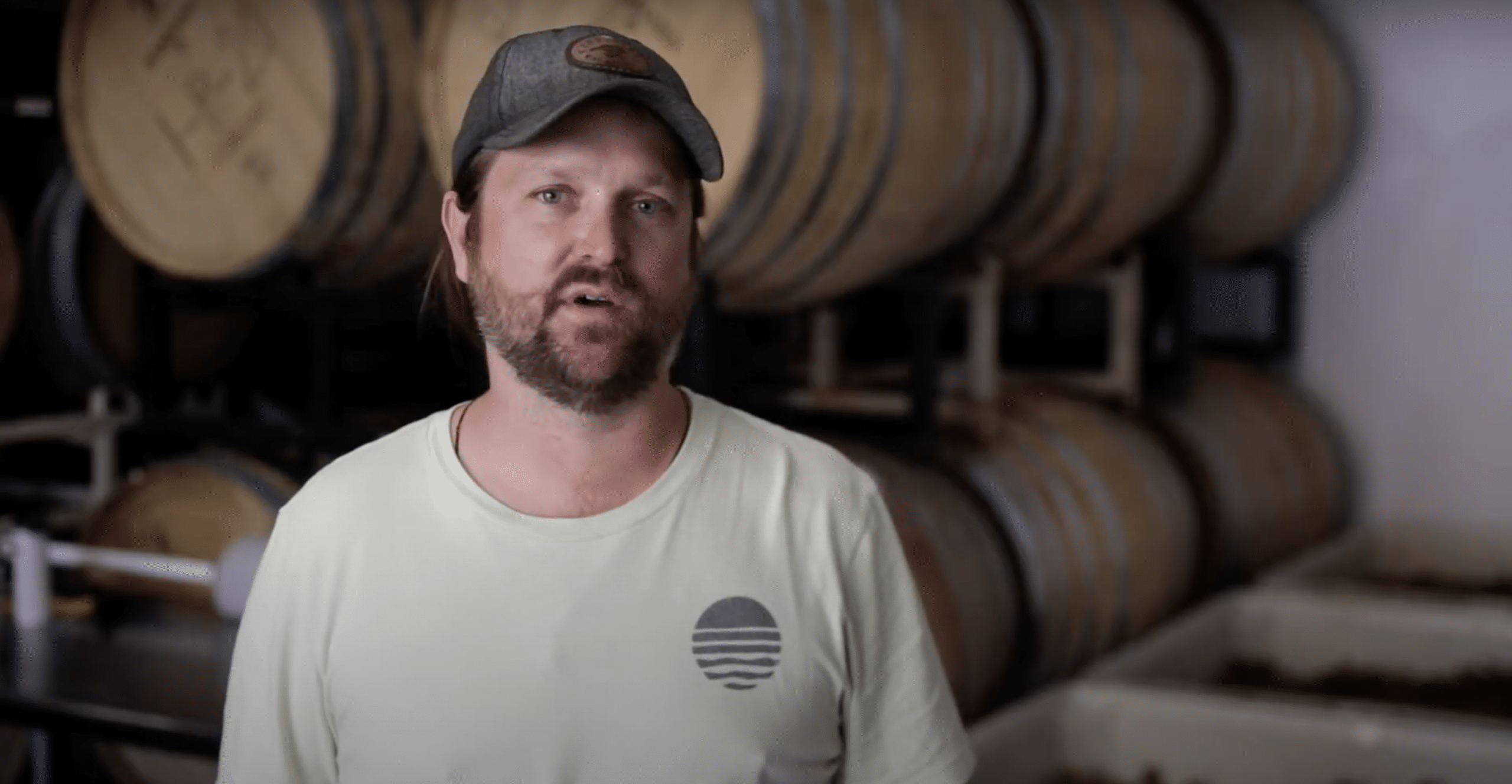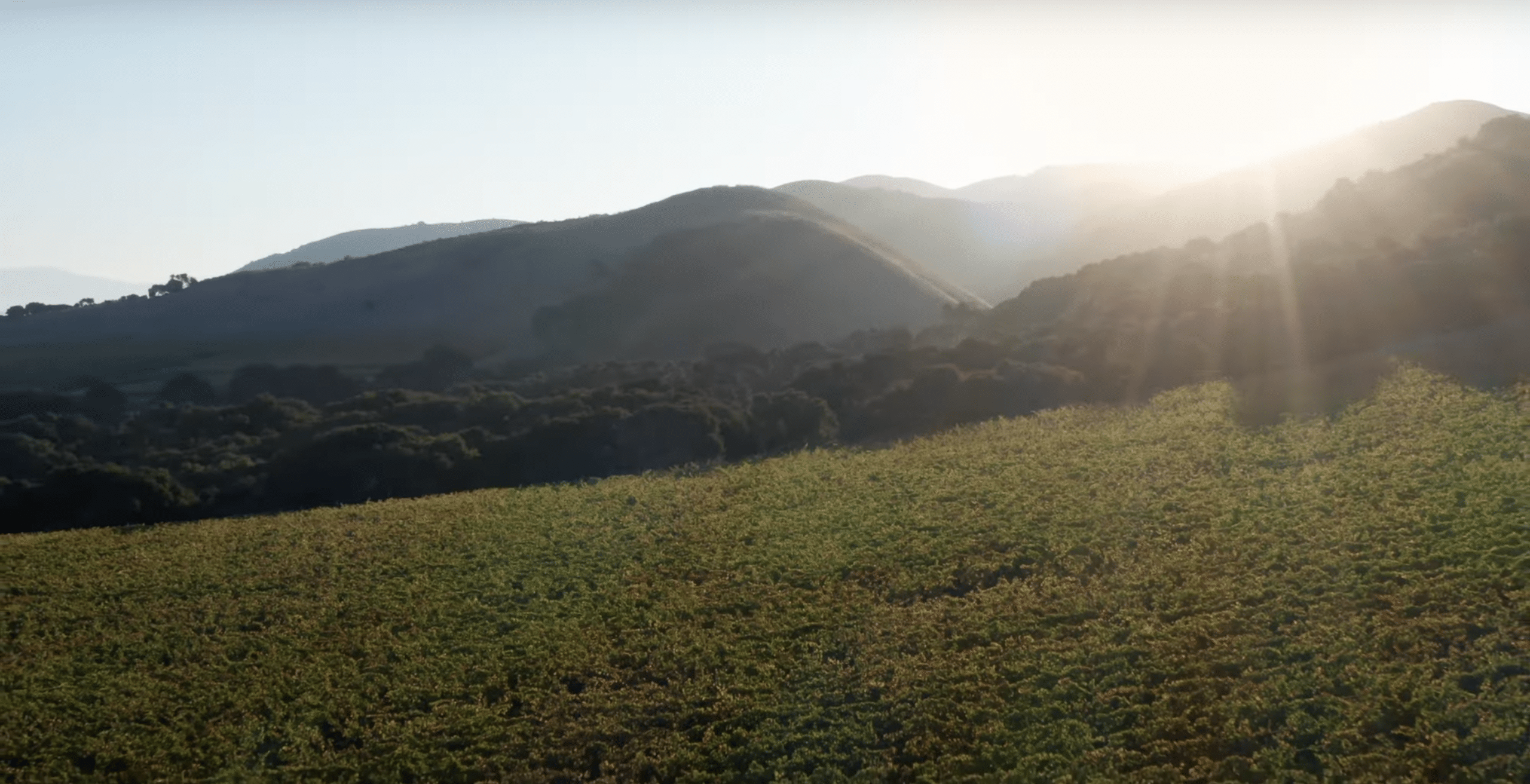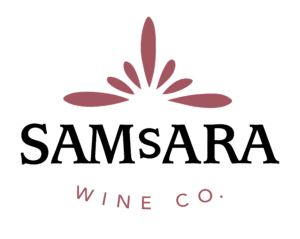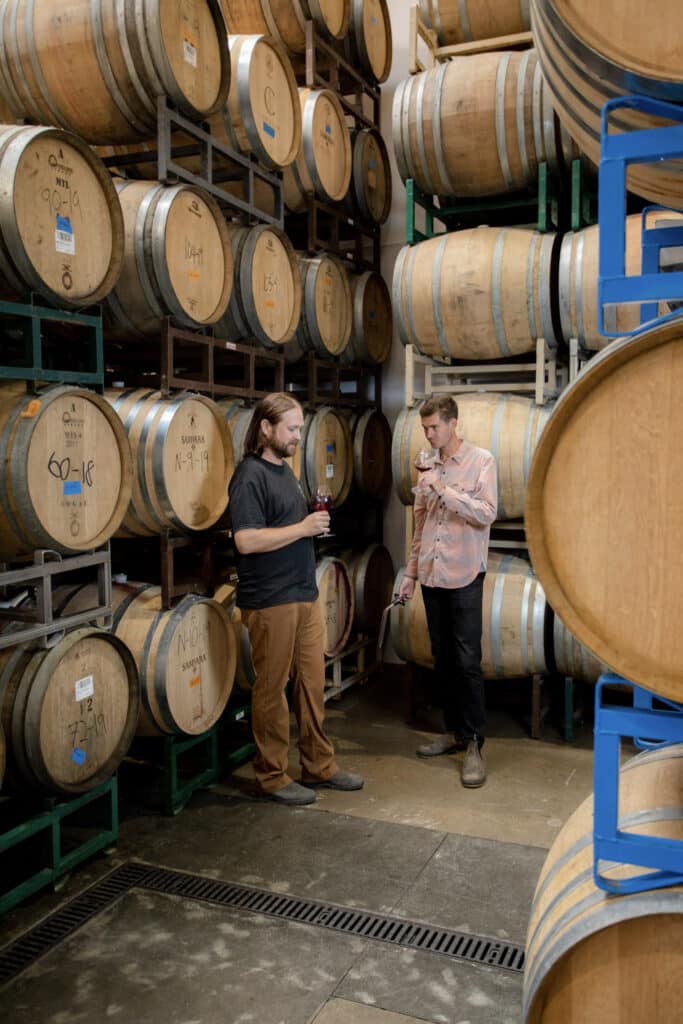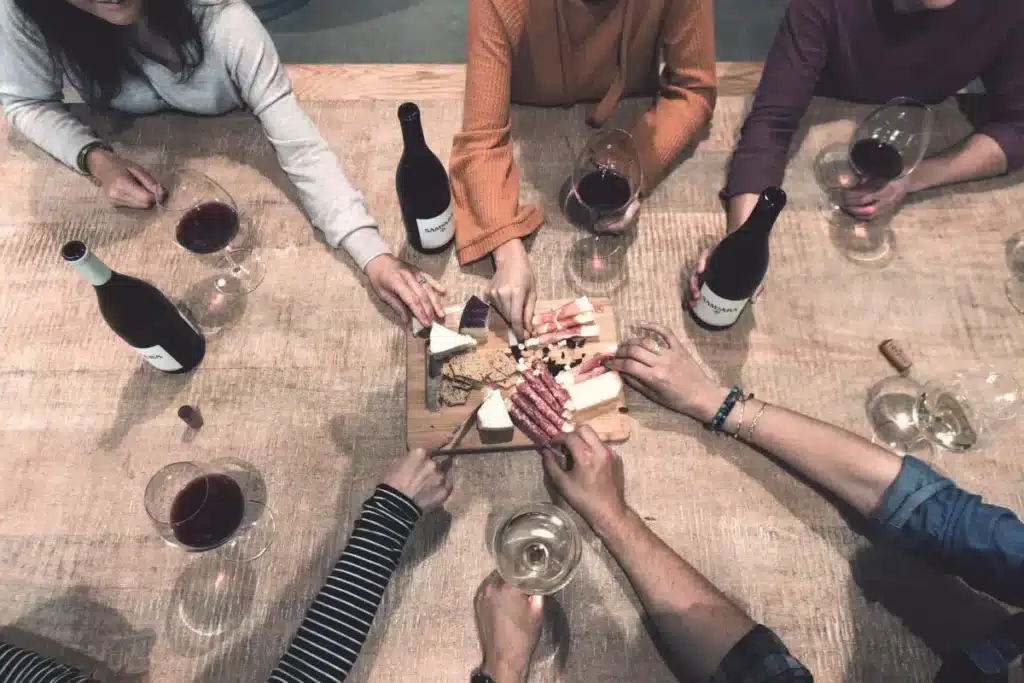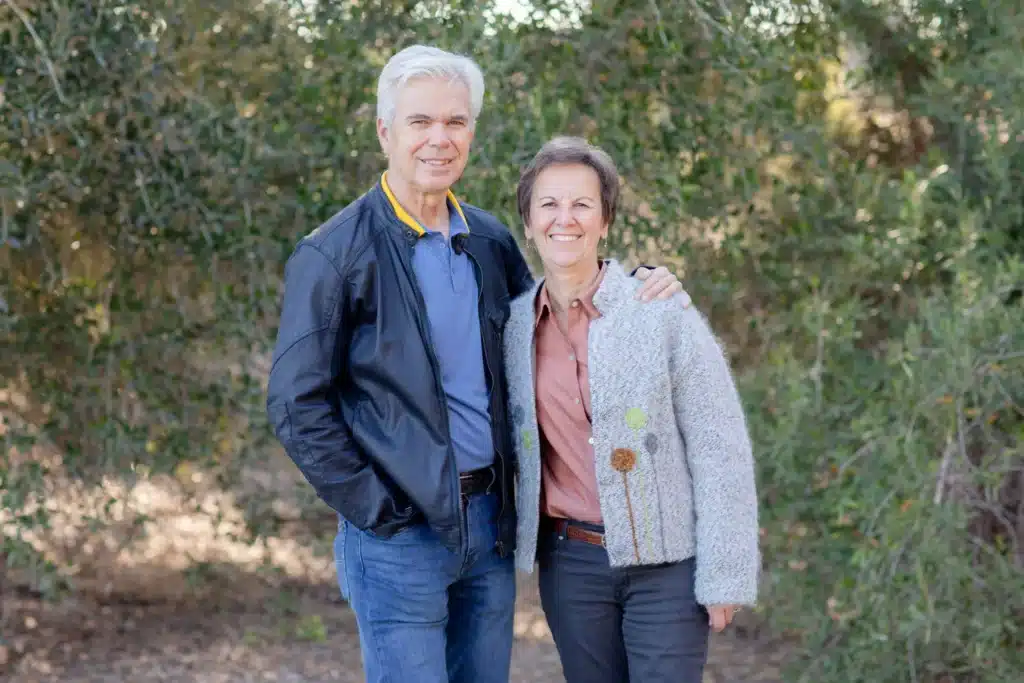CELLAR PRACTICES IN LOW-INTERVENTION WINEMAKING
SAMsARA
At SAMsARA Wine Co., we work hard in the vineyard to ensure the grapes we harvest have perfect ripeness, flavor, acidity, and tannins each year. Once the harvested fruit reaches our winery, we intervene as little as possible, allowing the unique terroir of each vineyard and vintage to shine through authentic aromatics and flavors. The result is the utmost expression of the fruit, soil, and site instead of winemaker manipulation.
FRUIT SORTING
Fruit sorting really starts in the vineyard, and we are careful to only use uncompromised fruit in our winemaking. Because we source our grapes from the finest vineyards in the region, most of the fruit that we receive at the winery during harvest is of top notch quality. Fruit sorting at the winery is important to ensure that we are not introducing any compromised fruit into our wine. Or course, there is always small percentage of comprised fruit that reaches the winery, even though our grapes a carefully grown and hand harvested. Once the fruit reaches the winery, we use a sorting table on which all the fruit gets run through, and any bad clusters get picked out by our team.
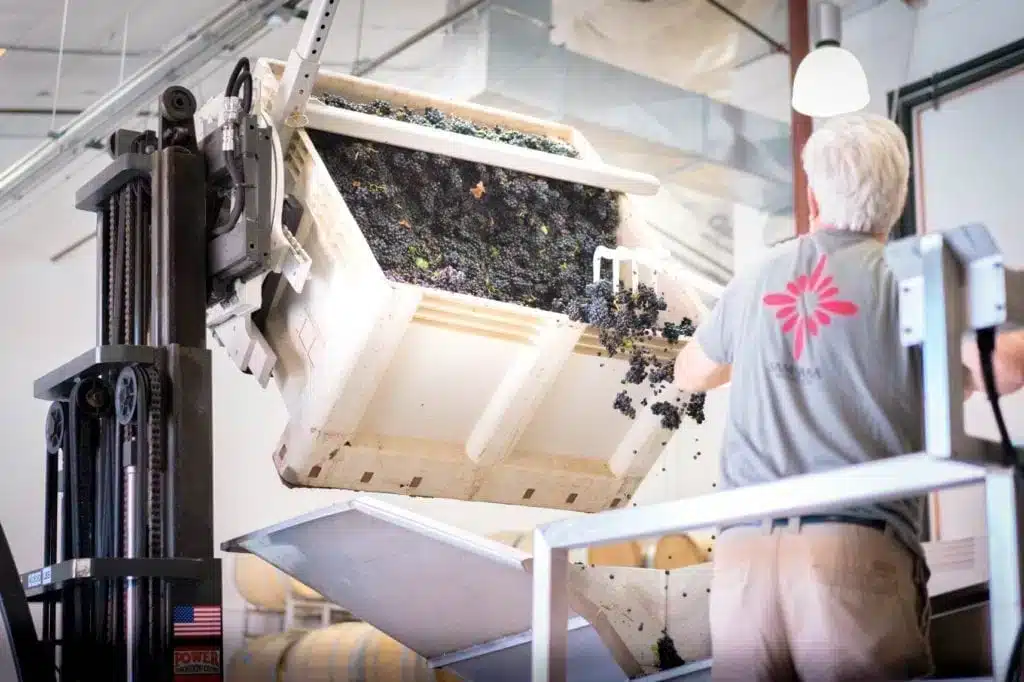
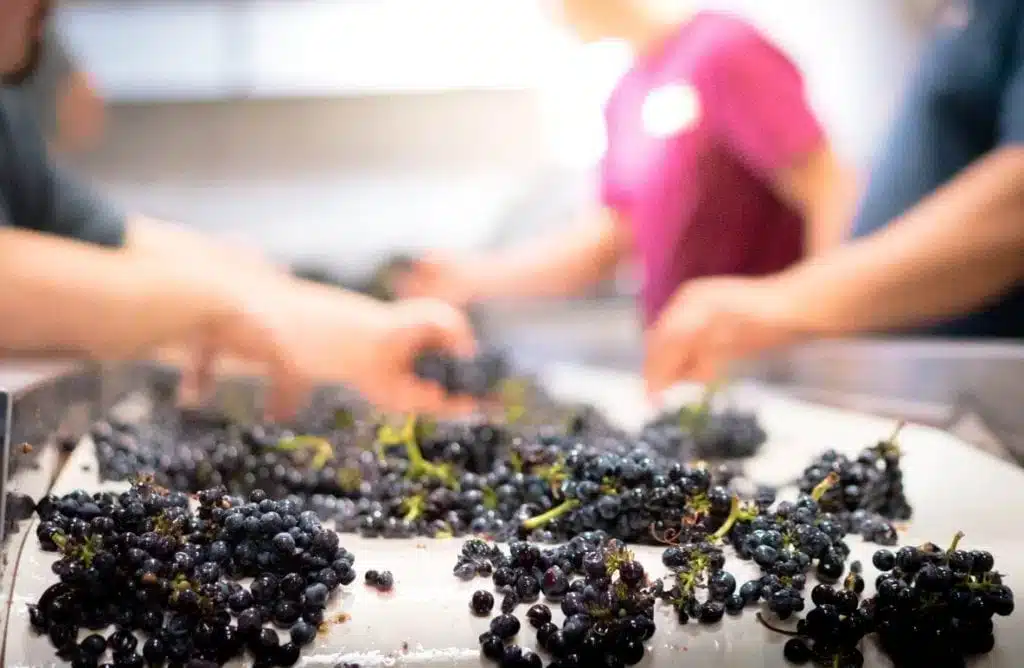
DESTEMMING
OUR CELLAR PRACTICES
The decision on destemmed fruit versus whole-cluster fruit is driven by our experience with the vineyards, and by our knowledge of how much stem inclusion the wines can support. Generally speaking, destemmed fruit yields more fruit driven/fruit focused wines, whereas whole-cluster fruit yields wines with a more of a spicy, savory focus.
We typically destem some percentage every red varietal. Pinot Noir is usually destemmed about 50 percent and then the other 50 percent is fermented as whole-clusters. We balance of the two elements and as our winemaker decides how the wine will benefit most. SAMsARA’s style of winemaking aims for delicious fruit characteristics, but with intense complexity and savory and spice-driven qualities as well. Read more about Whole Cluster vs Destemmed Grapes.
WHOLE CLUSTER FERMENTATION
SAMsARA is known for producing wines that have a lot of whole cluster fermentation. Whole cluster fermentation means that we ferment the grapes’ whole cluster, including berries and stems. This winemaking method beautifully enhances the natural savory and spice-driven aromatics and flavors in the wine. The process is simple: we run the harvested grapes on our sorting table to remove any compromised fruit and load them directly from the sorting table into a fermentation bin. One of our crewmembers stands in the bin with clean, sterilized legs and feet, and gently foot stomps the fruit as it gets fed into the fermentation bin. The fermentation goes on for three to four weeks as the native yeast continues to convert the sugar in the berries into alcohol (averaging at 13.5% ABV when complete).
FOOTSTOMPING
Fruit sorting really starts in the vineyard, and we are careful to only use uncompromised fruit in our winemaking. Because we source our grapes from the finest vineyards in the region, most of the fruit that we receive at the winery during harvest is of top notch quality. Fruit sorting at the winery is important to ensure that we are not introducing any compromised fruit into our wine. Or course, there is always small percentage of comprised fruit that reaches the winery, even though our grapes a carefully grown and hand harvested. Once the fruit reaches the winery, we use a sorting table on which all the fruit gets run through, and any bad clusters get picked out by our team.
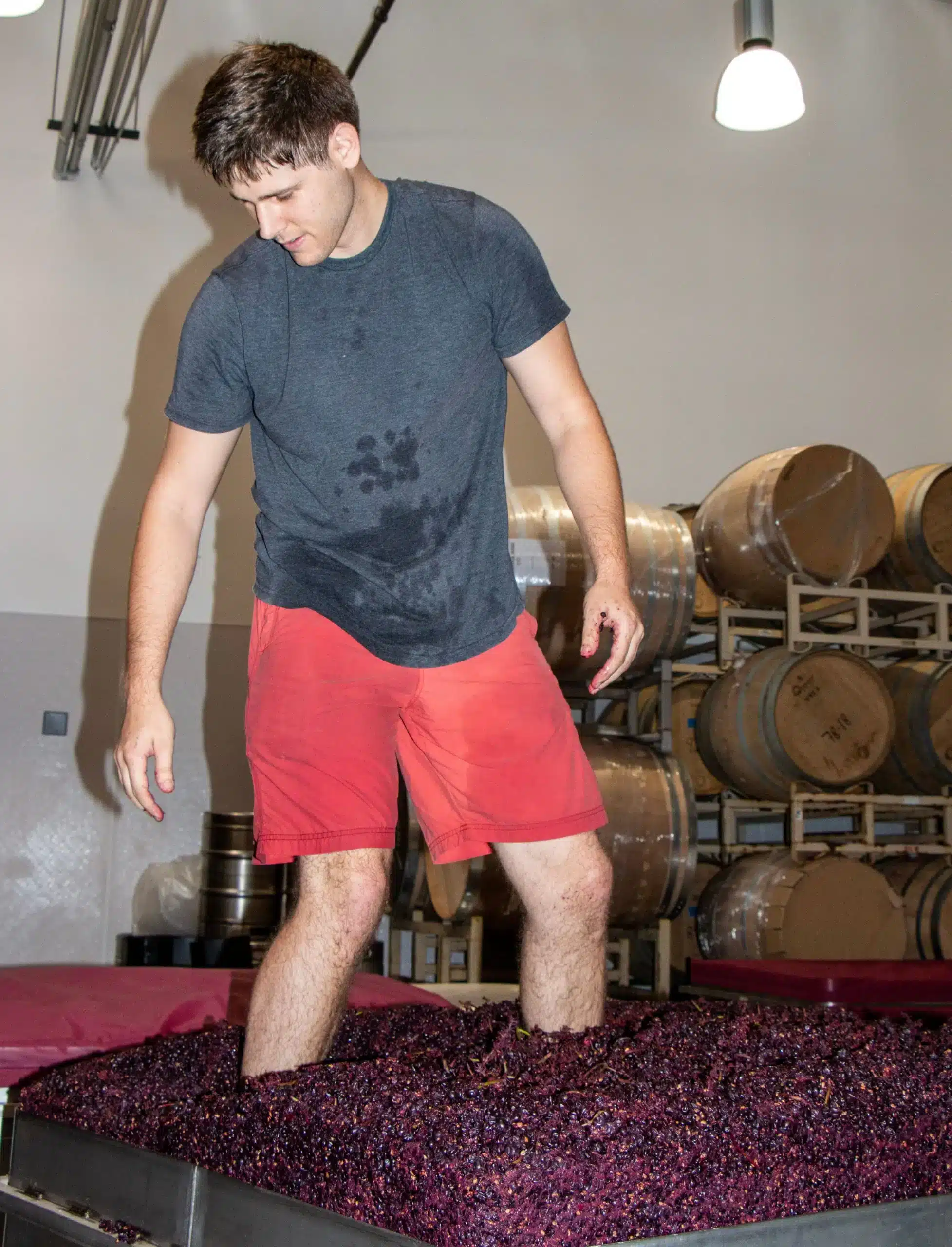
NATIVE/INDIGENOUS YEAST
Native yeast really is the driving force behind our ferments, contributing a lot to the style of our wines. At SAMsARA, we conduct slightly longer macerations than most wineries and it is important in our winemaking to get the fermentation started quickly. Once the wine begins fermenting it creates an anaerobic environment with no oxygen, preventing any microbial elements that can cause volatile acidity and wine flaws. We want our native yeast to get going as fast as they can. With high levels of native yeast from whole-cluster stems and berries, our fermentation lasts longer and happens in an environment that is clean and free of any undesired microbial activity.
PUNCHDOWNS
Punch Downs are the process of “punching down” the thick layer of skins, stems and seeds that forms at the surface of fermenting red wine and submerging the solid matter to extract color, tannins, flavor and aromas from the grape solids. As fermentation begins, yeast metabolizes sugar producing alcohol and CO2 as a byproduct. The CO2, carbon dioxide gas, generated in the ferment pushes up all the grape skins, stems, and seeds to the surface of the tank and creates and what we call the “cap.” The cap is just dried grape skins at the top of all the liquid below.
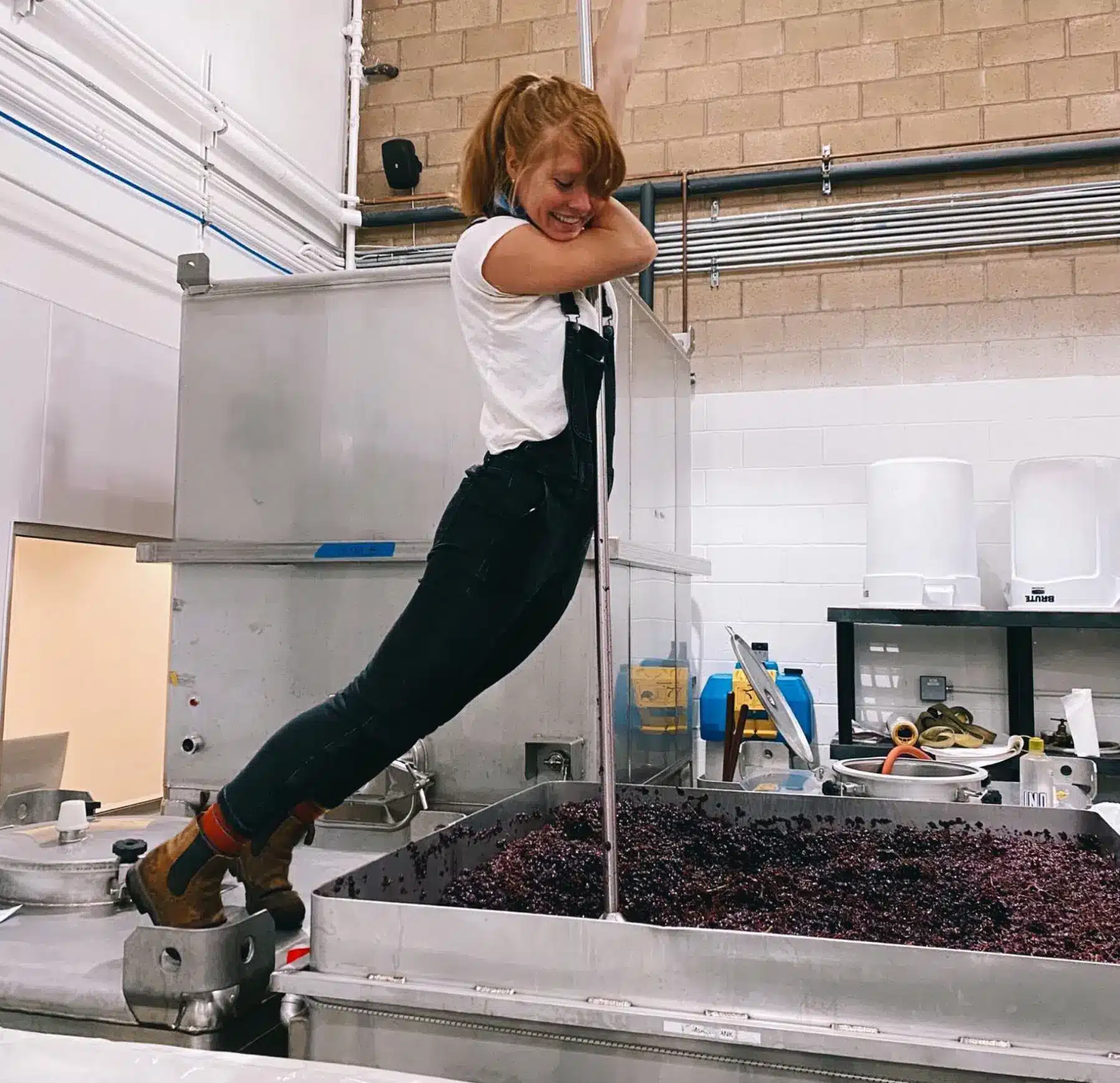
PRESSING
At that point we will press the wine. About 50 percent of the wine goes directly into barrels without going in the press. It is what we call “free run.” We get the other 50 percent of the wine from pressing the wine. We lift the fermentation tank and dump the wine into our European 2600-liter bladder press. It is gentle yet forceful and deliberate. It can inflate to the hundredth degree of atmospheric pressure, giving us a great deal of control over how we press. The press cycles are fully customizable and all programmed by our winemaker, Matt Brady.
OAK BARRELS
Barrels are the only element of our winemaking process that may impart any aroma or flavor into our wines. We are extremely conservative with our use of new oak, with around 30% of our Pinot Noir wine being aged in new French 500- liter oak barrels (more than twice the size of typical barrels). All other wines are aged in neutral French oak. Read more about our use of New vs Neutral Oak Barrels.
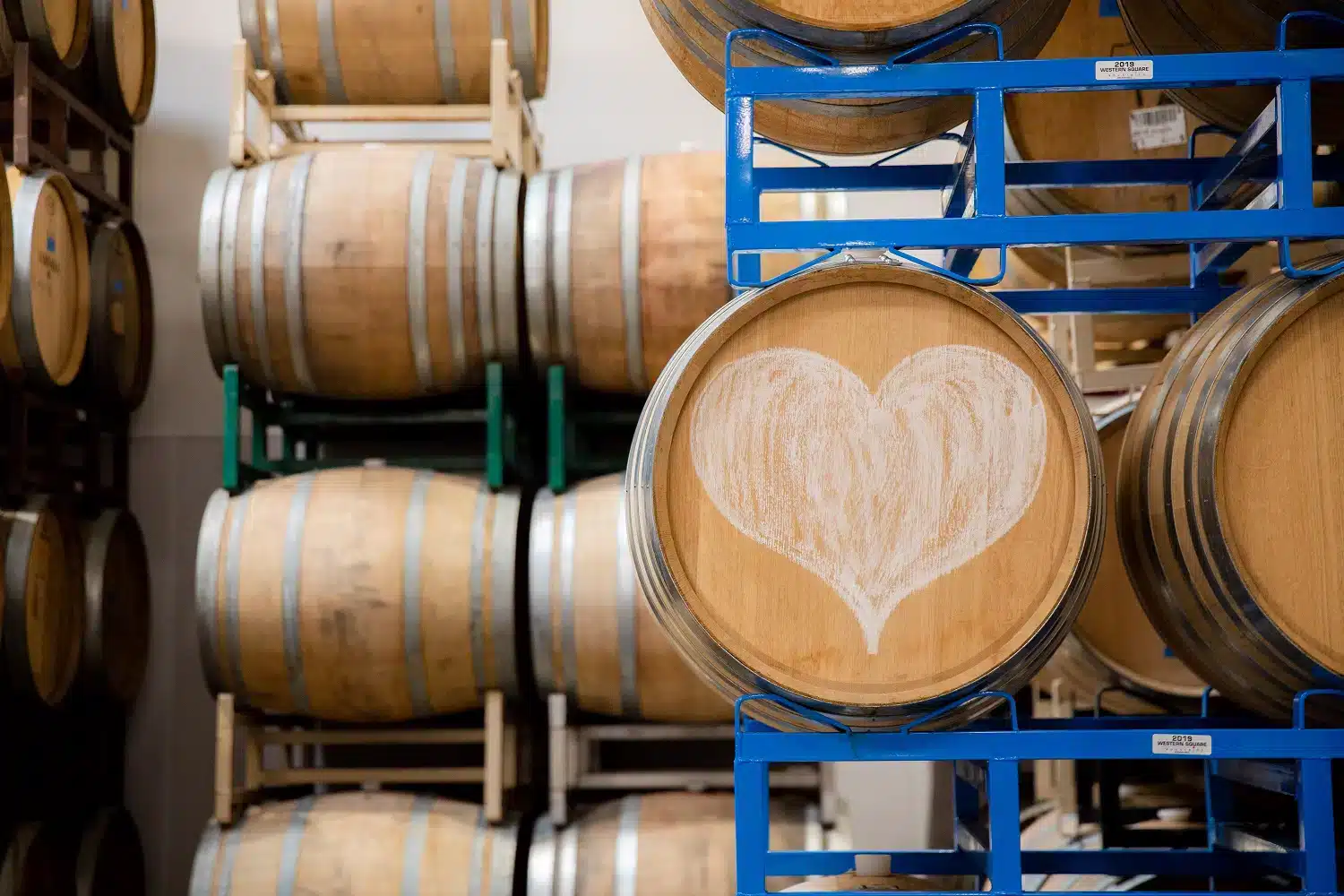
BLENDING
The goal for our winemaking team is to give ourselves many options down the road for blending. We may do one fermentation predominantly whole cluster, another fermentation predominately destemmed. We press it separately, so we get several barrels of wine, half are made in one style, the other half are made in a slightly different style. Ultimately that wine will come back together, but it will come back together in some proportion. The barrels came from different fermentations that we produced differently; some of them have neutral oak, some of them have once-used oak, some of it is free run, some of it is pressed. And having several barrels that are slightly different allows our winemaker to have some variability within the wines and create layers of complexity in the finished wine, once it is all blended together.
LAB TESTING
At every stage of the winemaking process, we conduct lab analysis on the fruit and on wine, beginning when the grapes are picked all the way to bottling. We monitor Brix, sugar, and pH with our lab equipment here at the winery. Anything more complex (i.e. testing levels of malic acids), we outsource to a reputable, local testing lab. It is also important to mention with the testing, the goal of doing this analysis is to ensure that we have clean and stable wines. When we bottle unfiltered wines, it is especially critical to know that there’s nothing undesirable growing in our wine. As fermentation begins, yeast metabolizes sugar producing alcohol and CO2 as a byproduct. The CO2, carbon dioxide gas, generated in the ferment pushes up all the grape skins, stems, and seeds to the surface of the tank and creates and what we call the “cap.” The cap is just dried grape skins at the top of all the liquid below.
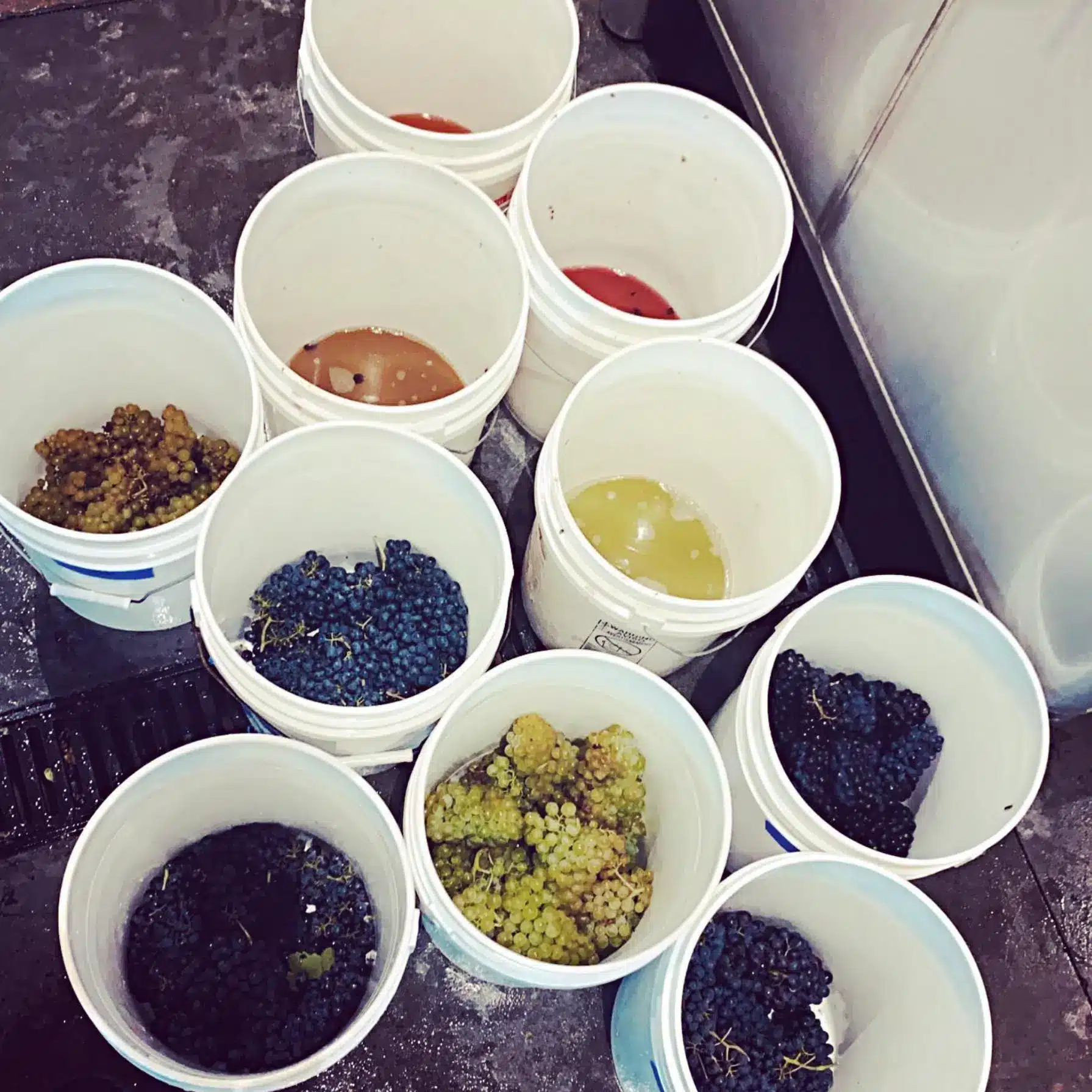
FILTERING
The goal is to not do intervene on the wine unless we must, and that applies to filtering as well. We will filter our white wines and rosé for aesthetic clarity and to increase the stability of the wine. Rosé is a good example because it does not complete malolactic fermentation. We inhibit the malolactic fermentation intentionally to preserve the malic acid and create that bright, crisp rosé we love. Because we have inhibited the malolactic fermentation and the wine goes to bottle with malic acid in it, it is important to filter the wine. If it were not filtered, the malolactic fermentation would naturally happen in bottle, which would result in a flawed wine that nobody would want to drink. Red wines will get filtered for similar reasons. Sometimes the fatter, softer, riper wines have higher pH levels, and those wines are less stable. In that situation filtering can be a good alternative instead of adding a lot of sulfur (which we do not do).
There are no discernible negative impacts from filtration. Sometimes it may have the slightest effect on color. But the color does not really drive a lot of what we do. Our goal is to make sure our customers and club members get wines that love whenever they choose to open them, whether it is right after the release or ten years later where it is been in the cellar for a long time.
BOTTLING
A lot of the work for bottling happens in advance of bottling day, when we will empty the barrels to tank. On bottling day, we will have all the bottling supplies staged at the winery, including all the glass, corks, labels, and capsules. We hire this large mobile bottling line to come to the winery. It is a big semi-truck that has all the bottling equipment. We first sanitize and sterilize their system, and then hook the hoses up to our tanks and go! It takes a crew of about ten people, so we will have the whole winery team helping on those bottling days. Typically, we recruit some of our valued wine club members or our friends over at the neighbor brewery, Captain Fatty’s, to give us some extra help.
The bottling line is basically an assembly line where the wine goes in. Somebody places an empty case of lightweight, USA made glass on the conveyer belt. The bottles get picked up by the bottling line, spun upside down, blasted out with nitrogen to remove any dust particles or anything that could be in there. The bottle gets spun up on its side, dosed with liquid nitrogen to get the oxygen out of the bottle, and quickly filled with wine. It is then dosed again with liquid nitrogen right as it is being corked. The bottling line pulls a vacuum as well just to ensure that we are not getting any oxygen in the bottle.
The bottled wine continues around the bottling line where it gets a label. Then they spit out the backend of the truck a bottle labeled, and corked. Before 2022, a team member would finish the process with a decorative tin capsule. However, we chose to eliminate the unnecessary cost and waste of these purely decorative embellishments.
Lastly our team on the end of the bottling line puts the finished bottles back in the cases, taping up the cases and stacking them on pallets.
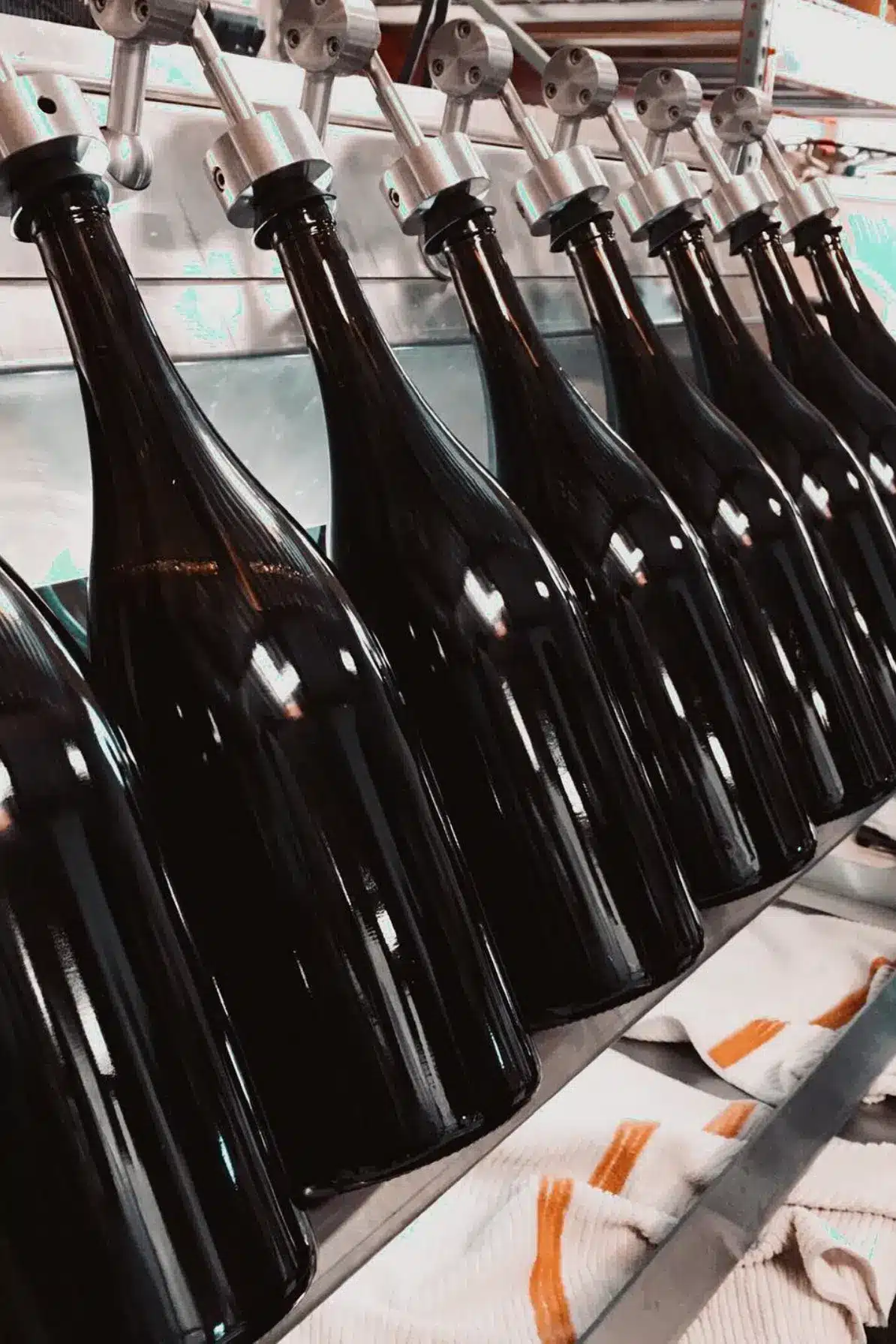
MAINTAINING A CLEAN AND SANITIZED WINERY
Cleaning is on the most critical thing that we do, because a lot of the technical wine flaws that can ruin a wine are driven by failures in sanitation. At SAMsARA, we have a strict cleaning protocol that we use for our facility and all of our equipment. Having a clean cellar, clean equipment, clean barrels, clean drains, etc. is emblematic of how we do things, even beyond the obvious reasons of sanitation and prevention of any unwanted microbial activity in our wine.
